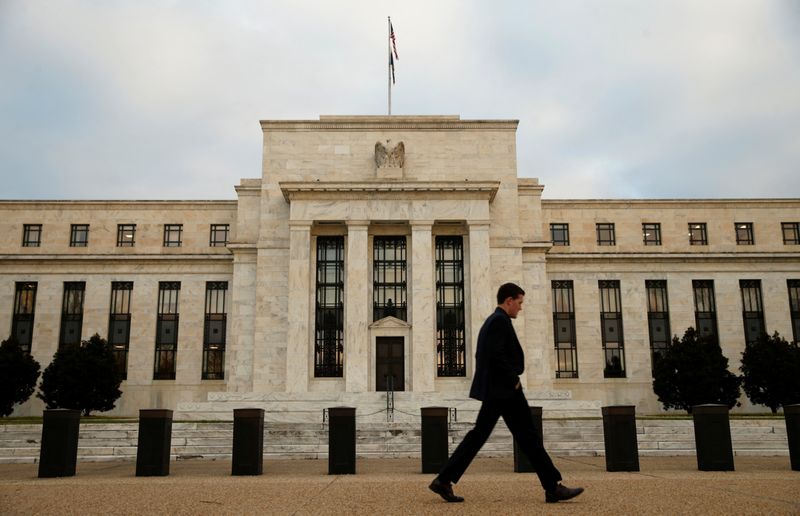By Howard Schneider
WASHINGTON (Reuters) – Strong U.S. economic and inflation data on Friday continued reshaping the debate among Federal Reserve policymakers over the pace and extent of interest rate cuts as investors further downgraded their expectations for a rate reduction at the central bank’s December meeting.
In the latest round of comments on U.S. monetary policy, Fed officials continued to express faith that inflation was coming under control and would allow the central bank to lower its benchmark rate over time from the current 4.5% to 4.75% range, a level felt to discourage spending and investment, to a more neutral setting.
But how fast that happens, and what level represents “neutral,” remain under debate, with Fed Chair Jerome Powell on Thursday saying the economy’s continued strength meant the Fed could take its time with the discussion.
The signs of increasing hesitancy over what a month ago had been baked-in expectations for a quick run of cuts into next year comes as a major political shift is underway following Donald Trump’s victory in last week’s presidential election, with Wall Street trying to reconcile what it sees as further inflationary pressures arising in the year ahead as the incoming Republican president pushes for tax cuts, higher tariffs and a crackdown on immigration.
Fed officials have so far been reluctant to say they are taking that into account, but investors already are and market bets on how quickly and how much the Fed will cut rates have ratcheted down over the last week.
Boston Fed President Susan Collins on Friday said she did not see a big urgency to lower rates but did not rule out another rate cut at the Fed’s next meeting on Dec. 17-18.
“I certainly wouldn’t take December off the table. But again, we’re not on a preset path and so we’ll have a look carefully at the data and see what make sense when we get” to the next Federal Open Market Committee meeting, she told Bloomberg TV.
DATA SURPRISES TO UPSIDE, AGAIN
Data that arrived Friday morning continued firmer than expected, with strong retail sales and rising prices for imported goods. After the data, traders reduced bets on a December rate cut to around a 60% chance from about 70% on Thursday.
Citigroup (NYSE:C)’s gauge of the degree to which incoming data exceeds consensus expectations among economists was at a seven-month high as of Thursday ahead of the stronger-than-expected retail sales figures.
Speaking to CNBC, Chicago Fed President Austan Goolsbee said a raft of recent numbers, including a weak October jobs report, may have been influenced by storm and strike events, and noted that a previous jump in import costs proved a mere “bump.”
His broad expectation is that inflation will continue to fall towards the Fed’s 2% target, acknowledging that one important indicator, the Personal Consumption Expenditures price index stripped of food and energy costs, remains “too high” at an estimated 2.8% for October.
“As long as we keep making progress towards the 2% inflation goal over the next 12 to 18 months, rates will be a lot lower then they are now,” Goolsbee said.
But if Fed officials disagree on where they see the “neutral” stopping point, “it does make sense to start slowing at some point how rapidly you are getting there just to figure out…are we at neutral, are we getting close?”
Fed policymakers in a set of economic projections issued in September anticipated at the median that the policy rate would fall to 2.9% some time in 2026. Investors in contracts tied to that rate now see rates staying as much as a percentage point higher then that.



